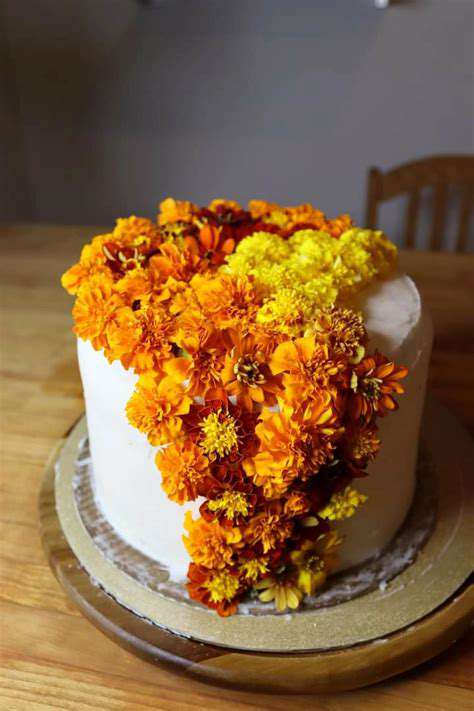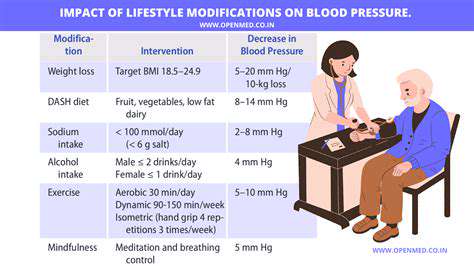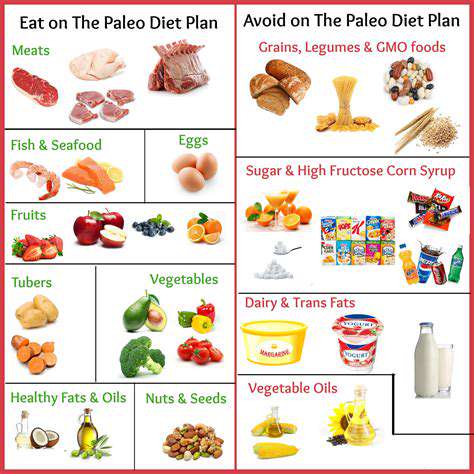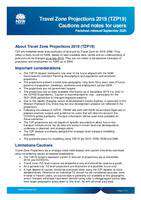Cupping for Muscle Pain: Relief and Recovery
What is Cupping Therapy?
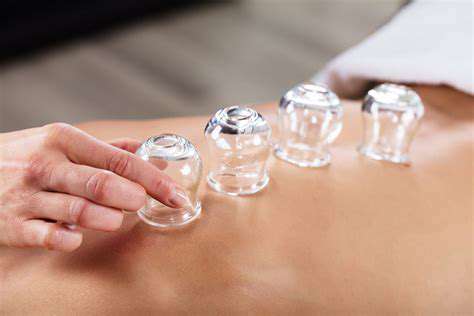
What Cupping Therapy Involves
Cupping therapy is an age-old healing technique where glass cups are applied to the skin after being heated or cooled to generate suction. This suction effect is thought to enhance blood circulation and lymphatic drainage, which can aid in relaxation and alleviate muscle tension. Many practitioners employ this method to treat various ailments, ranging from muscle soreness and pain to respiratory and digestive issues. It's worth noting that cupping therapy isn't a one-size-fits-all solution, and outcomes can differ based on individual factors and the specific condition being addressed.
The procedure generally entails positioning glass cups on the skin, either heated or cooled, to form a vacuum. This vacuum is thought to boost blood flow and encourage the elimination of toxins. Various cupping techniques exist, including stationary and moving cupping, each offering distinct advantages for different health concerns. It's essential to recognize that the medical community continues to debate and research the effectiveness of cupping therapy.
This therapy is frequently combined with other treatments, such as acupuncture or massage, to amplify the healing process. Trained practitioners administer the therapy safely and effectively, taking into account the patient's health status and any potential contraindications.
Benefits and Potential Risks of Cupping Therapy
Cupping therapy is reputed to provide several benefits, including pain relief, better circulation, and reduced muscle tension. Some practitioners report success in treating conditions like back pain, headaches, and arthritis. However, it's crucial to acknowledge that scientific evidence supporting the broad claims of cupping therapy remains in development. Additional research is required to establish a clear understanding of its efficacy and safety.
Potential risks associated with cupping therapy include skin bruising, discomfort, and, in rare instances, infections. Selecting a qualified and experienced practitioner is vital to ensure they can evaluate your health status and customize the treatment to your needs. Individuals with certain medical conditions, such as bleeding disorders or skin sensitivities, should consult their doctor before trying cupping therapy.
Apart from possible bruising, the technique can also cause temporary discomfort. The suction created may be painful for some people. Clear communication between the practitioner and patient is key to ensuring a safe and comfortable experience.
While cupping therapy shows promise as a complementary treatment for various conditions, it's important to approach it with realistic expectations. Always discuss potential risks and benefits with a healthcare provider before starting cupping therapy, especially if you have underlying health issues.
How Does Cupping Work for Muscle Pain?
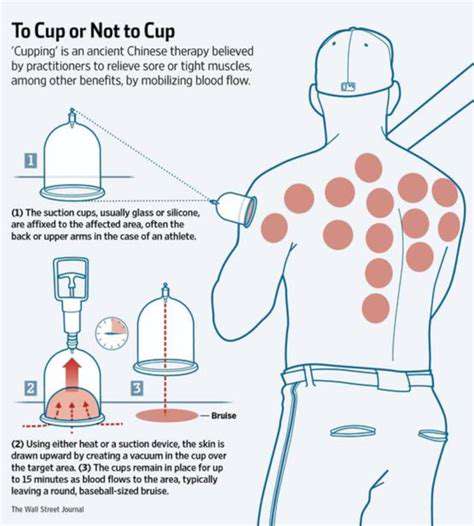
How Cupping Creates Suction
Cupping therapy involves placing heated or cooled glass or plastic cups on the skin. The cups generate a vacuum, pulling the skin and underlying tissues upward. This suction is thought to increase blood flow to the area, promoting healing and reducing pain. While the exact mechanisms are still under investigation, many believe it helps improve circulation by drawing out stagnant blood or lymphatic fluid. It's important to be aware that the suction can be quite strong, and some individuals may experience discomfort.
The vacuum inside the cups is central to how cupping functions. This vacuum draws the skin and underlying tissues upward, potentially stimulating blood flow to the targeted area. The heat or cold applied within the cup may further influence blood vessels, contributing to the therapeutic effect. Practitioners often use different techniques and cup sizes based on the patient's needs and the specific area being treated. While the technique has a long history, modern research continues to explore its effectiveness and scope of benefits.
Potential Benefits and Limitations
Cupping is believed to offer several potential benefits for muscle pain and other conditions. These include increased blood flow to the treated area, which may aid muscle recovery and reduce inflammation. Some practitioners suggest cupping can also help release muscle tension, leading to pain relief. However, these are potential benefits, and scientific evidence supporting them is still being gathered and evaluated.
While cupping may provide relief for muscle pain, it isn't a guaranteed solution. Responses to cupping vary widely among individuals. Some may experience significant relief, while others may notice little to no effect. The therapy's effectiveness depends on factors like the practitioner's skill, the specific condition being treated, and the patient's overall health. Consulting a healthcare professional before trying cupping is essential, particularly for those with underlying health conditions.
Potential side effects, such as bruising or skin irritation, are possible. Proper technique and care are necessary to minimize these risks. Additionally, cupping isn't a replacement for conventional medical treatments. If you're dealing with persistent or severe muscle pain, consult a doctor to identify the root cause and determine the appropriate treatment.
Potential Benefits and Considerations for Cupping Therapy
Potential Benefits of Cupping Therapy
Cupping therapy, an ancient practice, is increasingly popular for its potential benefits in managing muscle pain. It involves placing heated or cooled glass cups on the skin to create suction, which is thought to enhance blood flow and lymphatic drainage to the affected area. This improved circulation may help reduce muscle tension, inflammation, and pain, potentially speeding up recovery from various musculoskeletal issues. Advocates suggest cupping can also improve range of motion and flexibility, though more research is needed to confirm these effects.
One potential advantage of cupping therapy is its ability to promote relaxation. The suction and pressure applied during the procedure may trigger the release of endorphins, the body's natural pain-relieving chemicals. This relaxation response could contribute to overall well-being and possibly alleviate stress-related muscle pain. However, individual experiences with relaxation effects may vary.
Potential Mechanisms of Action
The exact mechanisms by which cupping therapy alleviates muscle pain are still under investigation. One theory suggests that the suction and pressure stimulate the release of inflammatory mediators, which may reduce inflammation in the area, leading to less pain and swelling. Another possibility is that improved blood flow to the affected tissues delivers more oxygen and nutrients, potentially promoting healing and repair of damaged muscle tissue.
Considerations for Cupping Therapy
While cupping therapy may offer pain relief, it's important to consider potential risks and limitations. Individuals with certain medical conditions, such as blood-thinning disorders or skin infections, should consult their healthcare providers before undergoing cupping. The therapy can cause temporary bruising or discomfort, so choosing a qualified practitioner who understands proper technique and safety precautions is essential.
Cupping therapy isn't a substitute for conventional medical treatment. If you're experiencing persistent or severe muscle pain, consult a doctor to determine the underlying cause and develop an appropriate treatment plan. Cupping should be viewed as a complementary therapy, potentially beneficial when combined with other treatments, but not as a standalone solution for all pain issues.
Important Safety Precautions and Contraindications
Practitioners should exercise caution when performing cupping therapy on individuals with certain medical conditions. Those with bleeding disorders, active skin infections, or pregnant women should discuss the risks and benefits with their physician before proceeding. Proper technique and hygiene are crucial to prevent complications like skin infections or adverse reactions. The therapist should thoroughly clean the area before and after the procedure and ensure the cups are sterilized to avoid bacterial spread.
It's also important to monitor the patient for any unusual reactions during and after the session. If excessive bruising, swelling, or signs of infection occur, seek medical attention immediately. Understanding the potential risks and limitations of cupping therapy is key to ensuring a safe and effective treatment experience.
Cupping Therapy and Recovery from Injuries
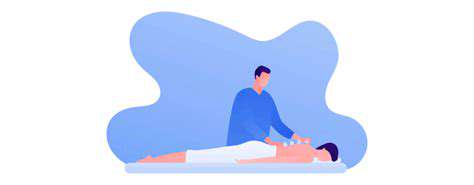
Understanding Cupping Therapy
Cupping therapy, an ancient practice, involves placing heated or cooled glass cups on the skin to create suction. This suction is believed to stimulate blood flow, reduce muscle tension, and promote healing. The therapy is often used to alleviate pain and discomfort from various conditions.
While the exact mechanisms behind cupping's effectiveness are still being studied, proponents suggest it can help reduce inflammation and improve circulation in targeted areas. It's important to note that the evidence supporting cupping therapy is still somewhat limited, and more rigorous research is needed to fully understand its benefits and limitations.
Types of Cupping
Several types of cupping exist, each with its own approach and potential benefits. Dry cupping involves placing cups on the skin without any additional substances, relying solely on suction. Wet cupping, less common today, involves applying leeches or bloodletting to the cups.
The application of heat or cold and the duration of treatment can also vary significantly. Understanding the different types and approaches is essential for selecting the most appropriate form of cupping for individual needs and conditions.
Cupping for Muscle Pain Relief
Cupping therapy is frequently used to address muscle pain and tension. The suction created by the cups is thought to release muscle knots and improve blood flow to the affected area, reducing pain and stiffness. Many athletes and individuals with chronic muscle pain find cupping beneficial.
The sustained suction may stimulate the release of endorphins, the body's natural pain relievers. This can provide long-term relief and promote overall well-being.
Cupping for Joint Pain
Cupping therapy may also offer relief for joint pain. By enhancing circulation and reducing inflammation around affected joints, cupping can help decrease discomfort and stiffness. This may be particularly helpful for individuals with conditions like arthritis or tendonitis.
Cupping therapy could also improve flexibility and range of motion in affected joints. However, consulting a healthcare professional is essential to determine if cupping is suitable for your specific condition.
Cupping and Lymphatic Drainage
Some practitioners believe cupping can stimulate lymphatic drainage, a process vital for removing waste and toxins from the body. The suction created by the cups may enhance lymphatic flow, potentially aiding in the elimination of cellular debris and other unwanted substances.
Improved lymphatic drainage could contribute to overall health and well-being. However, scientific evidence supporting this claim is limited and requires further research.
Cupping and Skin Conditions
Cupping therapy can sometimes address certain skin conditions, though this application is less common and requires careful consideration. Some practitioners believe cupping improves blood flow to affected areas, which may aid skin healing and regeneration. However, consulting a healthcare professional is essential to ensure cupping is safe and appropriate for the specific skin condition.
Safety and Precautions
While generally safe, cupping therapy carries some risks. It's important to consult a qualified healthcare professional before undergoing cupping, especially if you have underlying health conditions, take medications, or have a history of skin problems. Cupping can cause bruising or minor skin irritation in some cases. Proper technique is crucial to minimize these risks.
Always discuss potential benefits and risks with a healthcare professional before starting any new treatment, particularly if you have pre-existing conditions.


